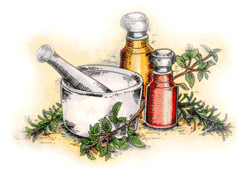 Abdominal Injury Abdominal Injury |
 Achilles Tendon Achilles Tendon |
 Ankle Bone Injury Ankle Bone Injury |
 Ankle Strain Ankle Strain |
 Ankle Synovitis Ankle Synovitis |
 Arm And Shoulder Tenosynovitis Arm And Shoulder Tenosynovitis |
 Arm Contusion, Forearm Arm Contusion, Forearm |
 Arm Contusion, Radial Nerve Arm Contusion, Radial Nerve |
 Arm Contusion, Upper Arm Injury Arm Contusion, Upper Arm Injury |
 Arm Exostosis Arm Exostosis |
 Arm Fracture, Forearm Arm Fracture, Forearm |
 Arm Fracture, Humerus Arm Fracture, Humerus |
 Arm Strain, Biceps Injury Arm Strain, Biceps Injury |
 Arm Strain, Forearm Arm Strain, Forearm |
 Arm Strain, Triceps Arm Strain, Triceps |
 Arm Strain, Upper Arm Arm Strain, Upper Arm |
 Back, Ruptured Disk Injury Back, Ruptured Disk Injury |
 Back Sprain, Lumbo Dorsal Region Injury Back Sprain, Lumbo Dorsal Region Injury |
 Back Sprain, Sacroiliac Region Injury Back Sprain, Sacroiliac Region Injury |
 Back Strain, Dorsal or Thoracic Spine Region Back Strain, Dorsal or Thoracic Spine Region |
 Back Strain, Lumbar Spine Region Back Strain, Lumbar Spine Region |
 Bee Sting Bee Sting |
 Bladder or Urethra Injury Bladder or Urethra Injury |
 Breast Contusion Breast Contusion |
 Breastbone Sprain Breastbone Sprain |
 Burns Burns |
 Buttock Contusion Buttock Contusion |
 Chest Muscle Strain Chest Muscle Strain |
 Collarbone Area Strain, Deltoid Muscle Collarbone Area Strain, Deltoid Muscle |
 Collarbone (Clavicle) Contusion Collarbone (Clavicle) Contusion |
 Collarbone Dislocation - Shoulder Joint Collarbone Dislocation - Shoulder Joint |
 Collarbone Fracture, Outer End Collarbone Fracture, Outer End |
 Collarbone Fracture, Shaft Midportion Collarbone Fracture, Shaft Midportion |
 Corneal Abrasion Corneal Abrasion |
 Dog Bites Dog Bites |
 Ear Injury Ear Injury |
 Elbow Bursitis, Radio-Humeral Elbow Bursitis, Radio-Humeral |
 Elbow Contusion, Ulnar Nerve Elbow Contusion, Ulnar Nerve |
 Elbow Contusion Elbow Contusion |
 Elbow Dislocation Elbow Dislocation |
 Elbow Fracture, Coronoid Process Elbow Fracture, Coronoid Process |
 Elbow Fracture, Epicondyle Elbow Fracture, Epicondyle |
 Elbow Fracture, Lower Humerus Elbow Fracture, Lower Humerus |
 Elbow Fracture, Radius Elbow Fracture, Radius |
 Elbow Fracture, Ulna Elbow Fracture, Ulna |
 Elbow Sprain Elbow Sprain |
 Elbow Strain Elbow Strain |
 Elbow Tendinitis or Epicondylitis Elbow Tendinitis or Epicondylitis |
 Eye Injury Eye Injury |
 Face Contusion Face Contusion |
 Snakebite Snakebite |
 Spider Bites Spider Bites |
 Tick Bites Tick Bites |
|
|
Home :: Elbow Dislocation
Elbow Dislocation
An injury to the elbow joint so that adjoining bones are displaced from their normal position and no longer touch each other. An elbow dislocation is usually a surgical emergency because damage to nerves and blood vessels is common and severe.
BODY PARTS INVOLVED
- Elbow joint.
- Adjoining arm bones (ulna, radius and humerus).
- Collateral ligament of the elbow.
- Soft tissue surrounding the dislocation, including nerves, tendons, muscles and blood vessels.
Causes
- Direct blow to the elbow.
- Fall onto an outstretched hand.
- End result of a severe elbow sprain.
- Congenital elbow abnormality, such as shallow or malformed joint surfaces.
- Powerful muscle contractions.
Signs & Symptoms
- Excruciating pain at the time of injury.
- Loss of elbow function.
- Severe pain when attempting to move the elbow.
- Visible deformity if the dislocated bones have locked in the dislocated position. Bones may spontaneously reposition themselves and leave no deformity, but damage is the same.
- Tenderness over the dislocation.
- Swelling and bruising around the elbow.
- Numbness or paralysis in the arm below the dislocation caused by pressure on blood vessels or nerves.
- Decreased or absent pulse at the wrist because of blood-vessel damage.
Treatment
Follow your doctor's instructions. These instructions are supplemental.
First Aid
- Keep the person warm with blankets to decrease the possibility of shock.
- Cut away clothing if possible, but don't move the injured area to do so.
- Immobilize the elbow, shoulder and wrist with padded splints in the position they are in. Don't try to manipulate the elbow.
- Follow the R.I.C.E. plan (rest, ice, compression and elevation) whenever you have swelling, warmth or pain in your elbow.
Continuing Care
- Splints will be necessary to immobilize the elbow , and sling will be necessary to immobilize the entire arm. The posterior (hind) splint is usually removed 2 weeks after injury, and the anterior(front) splint is removed 1 week later .A sling is used for another week.
- Use ice soaks 3 or 4 times a day. Fill a bucket with water, and soak the injured area for 20 minutes at a time.
- Use heat applications if heat feels better.Use heat lamps,hot showers or heating pads.
- Take whirlpool treatments,if available
Home Diet
- Drink only water before manipulation or surgery to correct the dislocation. Solid food in your stomach makes vomiting under general anesthesia more hazardous.
- Eat a well-balanced diet that includes extra protein, such as meat, fish, poultry, cheese, milk and eggs. Increase fiber and fluid intake to prevent constipation due to decreased activity.
Prevention
- Build your overall strength and muscle tone with a long-term conditioning program appropriate for your sport.
- Wear elbow pads for contact sports.
back to injuries section
|
|


